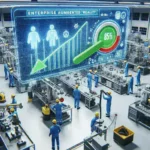Introduction
Adobe Photoshop has long been a cornerstone for digital artists, photographers, and designers. Continually evolving to meet the demands of its users, the software recently unveiled groundbreaking AI generative fill features that are set to redefine creativity in the digital domain. In this article, we will explore the significance of these new features, their historical context, practical applications, and future implications for the world of design.
What is AI Generative Fill?
The AI generative fill feature is an innovative tool that leverages artificial intelligence to analyze and understand the content of an image. This capability allows Photoshop to intelligently fill in missing parts of an image, seamlessly blending the new content with the surrounding elements. It opens up a world of possibilities for artists, enabling them to create visually striking images without the need for extensive manual editing.
Historical Context
To appreciate the significance of the new AI generative fill feature, it is essential to consider the evolution of Photoshop. The software was first launched in 1988 by Thomas and John Knoll, and since then, it has undergone numerous iterations, integrating advanced technologies that enhance user experience and creative potential.
Over the years, Adobe has introduced various features, such as Content-Aware Fill, which allowed users to remove unwanted elements from images. The current AI generative fill builds on this foundation, utilizing machine learning algorithms to generate new content that fits the context of the image.
How AI Generative Fill Works
The AI generative fill feature uses sophisticated algorithms to analyze the surrounding pixels and understand the overall composition of the image. When a user selects an area to fill, the AI evaluates the visual context, including colors, textures, and patterns, to generate realistic content that aligns with the existing elements.
Step-by-Step Guide to Using AI Generative Fill
- Step 1: Open your image in Adobe Photoshop.
- Step 2: Use the lasso tool or any selection tool to outline the area you wish to fill.
- Step 3: Navigate to the Edit menu and select ‘Generative Fill.’
- Step 4: Choose the fill options, and let Photoshop process the selection.
- Step 5: Review the generated fill and make adjustments if necessary. Save your work!
Benefits of AI Generative Fill
The introduction of AI generative fill in Photoshop offers numerous benefits:
- Efficiency: Speed up the editing process and reduce the time spent on manual adjustments.
- Creativity: Empower artists to experiment with their designs, enabling them to explore new creative avenues.
- Quality: Produce high-quality fills that maintain the integrity of the original image.
- User-Friendly: Simplify complex editing tasks, making it accessible for users of all skill levels.
Potential Challenges
While the AI generative fill feature is a significant advancement, it is essential to acknowledge potential challenges:
- Over-reliance on AI: Users may become overly dependent on automated features, stifling their creative instincts.
- Loss of Originality: The ease of generating content may lead to homogenized designs, lacking unique artistic flair.
- Learning Curve: Some users may face challenges in understanding how to best utilize the feature for their specific needs.
Comparative Analysis
The introduction of AI generative fill features adds a powerful dimension to Photoshop’s suite of tools. While it is essential for users to embrace these advancements, it is equally important to retain traditional techniques that foster creativity and originality. Striking a balance between AI-driven tools and personal artistic expression will be key to navigating the future of design.
Future Implications
As AI technology continues to evolve, the implications for digital art and design are profound. The enhancement of creative tools through AI generative fill features stands to usher in a new era of artistic expression. We can anticipate:
- Greater Integration of AI: More tools that incorporate AI capabilities, offering enhanced customization and flexibility.
- Collaborative Creation: Opportunities for artists to collaborate with AI, creating hybrid works that blend human creativity with machine efficiency.
- Market Expansion: A growing demand for digital art, as more people become comfortable using new technologies.
Expert Opinions
Industry professionals have responded positively to the introduction of AI generative fill features. Many agree that this innovation will revolutionize the way digital art is created and edited. According to renowned graphic designer Sarah Nelson, “The AI generative fill feature allows for unprecedented levels of creativity and efficiency. It enables artists to focus on the bigger picture rather than getting bogged down in tedious details.”
Conclusion
Adobe Photoshop’s introduction of AI generative fill features represents a significant leap forward in the realm of digital art and design. This powerful tool not only enhances the creative process but also empowers users to explore new possibilities in their work. By embracing this technology while maintaining a commitment to originality and personal expression, artists can harness the full potential of AI in their creative journeys. As we look to the future, the partnership between human creativity and AI technology will undoubtedly continue to evolve, shaping the landscape of digital art for generations to come.


